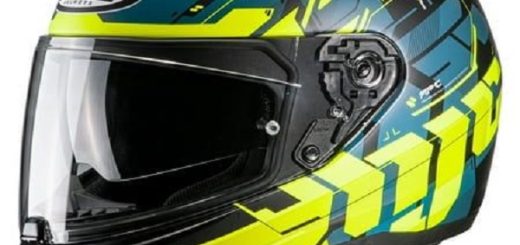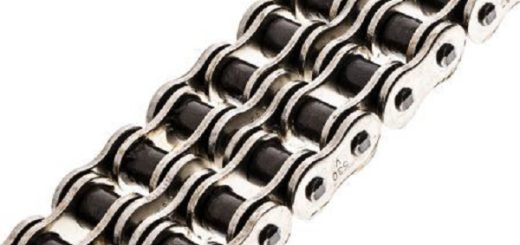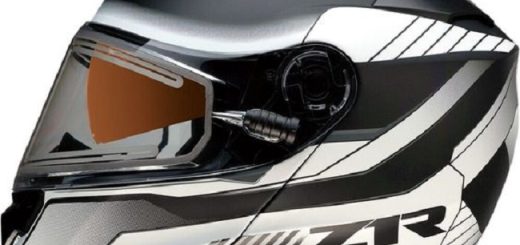How to Put on a Motorcycle Helmet Safely and Efficiently
For motorcycle riders, a helmet is more than just an accessory; it’s a crucial piece of safety equipment. Ensuring your helmet fits properly and knowing how to put it on correctly are essential steps in maximizing its protective capabilities. This guide will equip you with the knowledge to confidently put on a motorcycle helmet for a safe and comfortable ride.
The Importance of Proper Helmet Fit
Before diving into the nitty-gritty of putting on your helmet, it’s vital to emphasize the importance of proper fit. A helmet that’s too loose can move around in a crash, reducing its effectiveness. Conversely, a helmet that’s too tight can be uncomfortable and impede your focus while riding.
Here’s how to ensure your motorcycle helmet provides optimal protection:

- Measure Your Head: Use a soft tape measure to measure the circumference of your head just above your eyebrows. Consult the manufacturer’s sizing chart to find the corresponding helmet size.
- Snug but Comfortable: The helmet should feel snug but comfortable when placed on your head. You should be able to wiggle your head slightly but not excessively.
- Cheek Pad Check: With the helmet on, try to gently pull the cheek pads outwards. They should create a slight pressure against your cheeks without feeling overly constricting.
- Eye Port Visibility: The visor (eye port) should offer a clear and unobstructed view without straining your neck.
If your helmet doesn’t feel right, don’t hesitate to exchange it for a better-fitting size.
Gearing Up: The Steps to Putting on Your Helmet
Now that you understand the significance of proper fit, let’s delve into the steps of putting on your motorcycle helmet safely and efficiently:
-
Unfasten the Chin Strap: Locate the chin strap buckle on the bottom of the helmet. Most helmets utilize a D-ring closure system with two metal rings and a strap. Unfasten the buckle by pulling the free end of the strap.
-
Open the Visor: Lift the visor completely open to provide ample space for your head to enter the helmet.
-
Position the Helmet: Hold the helmet by the sides, slightly angled forward. Carefully insert your head into the helmet, ensuring your hair doesn’t get caught in the padding.
-
Secure the Chin Strap: Once your head is inside the helmet, locate the chin strap again. Thread the free end of the strap through both D-rings, ensuring it’s not twisted.
-
Tighten the Chin Strap: Grip both ends of the chin strap and pull it snug. The helmet should feel secure but not uncomfortably tight. You should be able to fit two fingers between the strap and your chin.
-
Visor Check: Double-check that the visor is fully closed and latched securely. A loose visor can obstruct your vision or detach during a ride.
-
Head Movement Test: With the helmet fastened, gently move your head from side to side and up and down. The helmet should move slightly with your head but not excessively.
Pro Tips for Putting on Your Helmet Like a Pro
Here are some additional tips to streamline the helmet-wearing process and enhance your comfort:

- Practice at Home: Before hitting the road, practice putting on and taking off your helmet at home. This helps develop muscle memory and ensures a smooth process when you’re ready to ride.
- Glasses and Communication Systems: If you wear glasses, put them on before placing the helmet on your head. For communication systems like headsets, install them according to the manufacturer’s instructions before your ride.
- Lined Up and Ready: Unfasten the chin strap and open the visor completely before you climb onto your motorcycle. This prevents fumbling and awkward adjustments while mounted.
- Weather Considerations: If you anticipate rain or cold weather, consider wearing a balaclava or other head covering underneath your helmet for added comfort and warmth.
By following these steps and incorporating these helpful tips, you’ll be able to put on your motorcycle helmet quickly, efficiently, and most importantly, safely.
Debunking Common Myths About Motorcycle Helmets
There are several myths circulating about motorcycle helmets. Let’s dispel some of the most common ones:
-
Myth: Helmets are too hot and uncomfortable to wear in warm weather.
-
Reality: Modern motorcycle helmets are designed with ventilation systems to promote airflow and keep your head cool. Additionally, many helmets come with visors that offer UV protection for sunny days.
-
Myth: Helmets restrict your vision and hearing.
Safety Secured: Choosing the Right Helmet and Additional Considerations
While mastering the art of putting on your helmet is crucial, selecting the right helmet for your needs is equally important. Here’s a breakdown of key factors to consider:
Helmet Types: Finding Your Perfect Match
Motorcycle helmets come in various styles, each offering distinct advantages and catering to different riding preferences. Here’s a quick guide to the most common types:
- Full-Face Helmet: Provides the most comprehensive protection, covering the entire head, face, and neck. Ideal for long-distance touring and high-speed riding.
- Modular Helmet (Flip-Up Helmet): Offers the versatility of a full-face helmet with a chin bar that flips up, allowing for easy on and off and increased ventilation during breaks.
- Open-Face Helmet (3/4 Helmet): Exposes the face but protects the head and neck. Popular for short commutes and cruiser motorcycles, but offers less protection compared to full-face helmets.
- Dual-Sport Helmet: Designed for both on-road and off-road riding, often featuring a peak visor for sun protection and improved visibility on dirt trails.
The best helmet type is the one that fits you comfortably and suits your riding style.
Additional Considerations for Optimal Safety
Beyond the type of helmet, consider these factors to maximize your safety on the road:
- Safety Certifications: Ensure your helmet meets safety standards set by reputable organizations like the Department of Transportation (DOT) or the Economic Commission for Europe (ECE).
- Visor Options: Choose a visor material that offers scratch resistance, UV protection, and anti-fog properties for optimal visibility in various conditions. Tinted visors can be helpful in bright sunlight, while clear visors are essential for nighttime riding.
- Replacement Parts: Helmets are designed to absorb impact in a crash. Following a serious accident, the helmet should be replaced, even if it appears undamaged. Consider purchasing a helmet with readily available replacement visors and cheek pads for long-term use.
Maintaining Your Helmet for Long-Lasting Performance
Just like any safety equipment, proper maintenance is crucial for your helmet’s effectiveness. Here are some key practices to keep your helmet in top condition:

- Regular Cleaning: Clean the helmet’s exterior with a mild soap solution and a soft cloth. Avoid harsh chemicals or abrasive cleaners that can damage the shell or visor.
- Visor Care: Clean the visor regularly using a dedicated visor cleaner and a microfiber cloth. Avoid using paper towels or abrasive materials that can cause scratches. Some visors even have anti-scratch coatings that require specific cleaning products.
- Liner Maintenance: The helmet’s liner absorbs sweat and grime over time. Most liners are removable and washable, following the manufacturer’s instructions. Regular cleaning prevents the buildup of bacteria and odors, ensuring a fresh and comfortable helmet interior.
- Storage: When not in use, store your helmet in a cool, dry place away from direct sunlight. Extreme temperatures can damage the helmet’s materials and compromise its protective capabilities.
By following these simple maintenance tips, you can extend the lifespan of your motorcycle helmet and ensure it continues to provide optimal protection for years to come.
Hitting the Road with Confidence: The Final Gear Check
Throughout this guide, we’ve explored the proper way to put on a motorcycle helmet, addressed common myths, and offered valuable considerations for choosing and maintaining your helmet. Remember, a properly fitted helmet donned correctly becomes an essential safeguard on every ride. By following these steps and incorporating these practices, you’ll be well-equipped to navigate the road with confidence and prioritize your safety.


